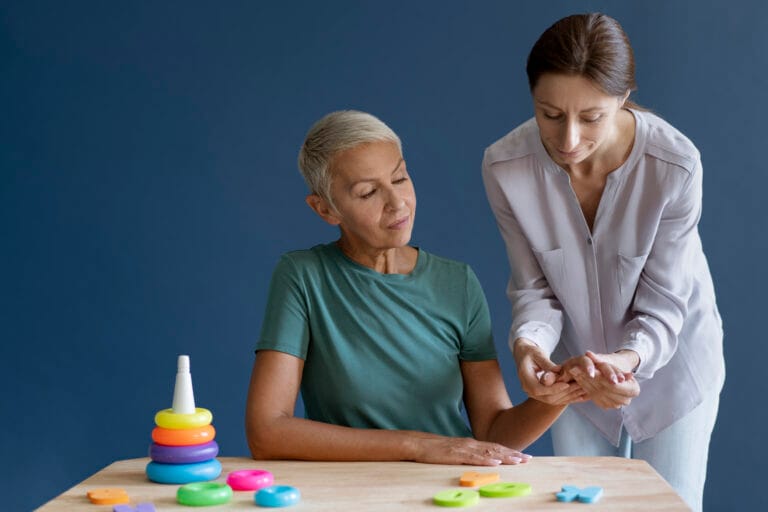Stroke is a leading cause of disability and the fifth most common cause of death worldwide. Timely care can prevent severe complications, improve recovery, and even save lives. In this article, we explore comprehensive stroke care, from early detection to rehabilitation, ensuring you stay informed and prepared.
1. Understanding the Types of Stroke




Ischemic Stroke: Blocked Arteries
An ischemic stroke occurs when blood flow to the brain is restricted due to a clot or blockage. It accounts for approximately 87% of all strokes.
Hemorrhagic Stroke: Brain Bleeds
This type happens when a blood vessel in the brain ruptures, leading to bleeding and damaging surrounding tissues.
Transient Ischemic Attack (TIA): A Warning Sign
TIA, also called a “mini-stroke,” is a temporary blockage of blood flow to the brain and serves as a crucial warning to prevent future strokes.
2. Early Signs and Symptoms of Stroke
Recognizing the signs of a stroke early is critical to getting timely medical help. The FAST acronym is commonly used:
- Face drooping: Is one side of the face numb or drooping?
- Arm weakness: Is one arm weak or numb?
- Speech difficulty: Is speech slurred or hard to understand?
- Time to call 911: If these symptoms appear, act fast!


3. Emergency Response: What to Do During a Stroke
If you or someone else shows symptoms of a stroke, call 911 immediately. Every second counts—quick medical attention can minimize brain damage.
The Golden Hour: Treatment within the first 60 minutes significantly improves outcomes, especially with medications like tPA (tissue plasminogen activator) for ischemic strokes.
4. Diagnostic Methods for Stroke
- CT Scan: Provides detailed images to detect bleeding in the brain.
- MRI: Offers high-resolution imaging for detecting smaller strokes.
- Blood Tests and Angiography: Help assess clotting and blood vessel health.



5. Treatment Options for Stroke
Thrombolytic Treatment (tPA)
A clot-busting medication given within 3-4.5 hours of symptom onset to restore blood flow in ischemic stroke patients.
Surgery for Hemorrhagic Stroke
Procedures like craniotomy help relieve pressure and control bleeding in the brain.
Medications
Doctors may prescribe antiplatelets, anticoagulants, or cholesterol-lowering drugs to prevent further strokes.
6. Post-Stroke Recovery and Rehabilitation
Stroke rehabilitation is essential for regaining independence and improving quality of life. Key rehabilitation areas include:
- Physical Therapy: Helps restore motor functions and strength.
- Occupational Therapy: Focuses on improving daily living skills.
- Speech Therapy: Assists with language and communication challenges.




7. Role of Family and Caregivers in Stroke Recovery
Caregivers play a vital role in supporting stroke survivors during recovery. They can assist with physical tasks, provide emotional support, and ensure adherence to medication routines.
8. Common Complications After a Stroke
Stroke can lead to several complications, including:
- Paralysis: Loss of movement in parts of the body.
- Aphasia: Difficulty with speech and language processing.
- Emotional Changes: Depression and anxiety are common.
9. Preventing Stroke Recurrence
Roughly 1 in 4 stroke survivors experiences another stroke. To reduce the risk:
- Take prescribed medications like blood thinners.
- Adopt a healthy diet and regular exercise routine.
- Monitor blood pressure and manage stress.
10. The Role of Technology in Stroke Recovery
Technology offers innovative tools for stroke recovery:
- Robotics: Assists with physical therapy.
- Telemedicine: Enables continuous care remotely.
- Mobile apps provide personalized rehabilitation plans.

11. Nutrition for Stroke Recovery
A nutrient-rich diet can promote brain health and speed up recovery. Foods like leafy greens, fish high in omega-3s, and nuts are beneficial.
12. Emotional and Psychological Support
Stroke survivors often experience emotional changes. Counseling, support groups, and social activities can help reduce the impact of depression and anxiety.
13. Long-Term Outlook and Sustained Recovery
Every recovery journey is unique. Many stroke survivors manage long-term disabilities but can lead fulfilling lives with proper care, therapy, and support systems.
14. Stroke Care: Key Takeaways
Stroke care requires quick emergency action, comprehensive medical treatment, and continuous rehabilitation. Caregivers and technology play a crucial role in improving outcomes. With the right support, many stroke survivors lead active, meaningful lives.
Conclusion
Understanding stroke care—from prevention to treatment and recovery—empowers you to act decisively and support others. Whether it’s adopting a healthier lifestyle or recognizing the early signs, being prepared can save lives.
